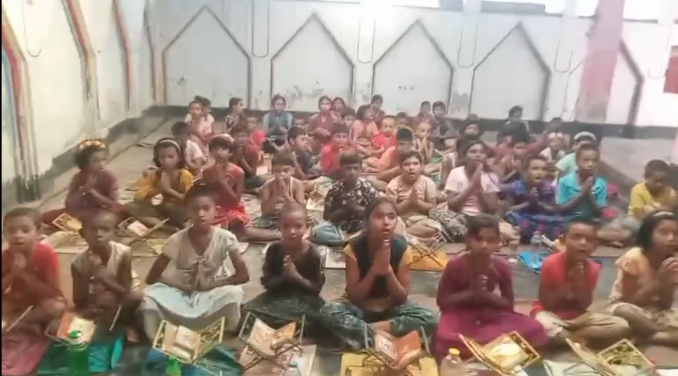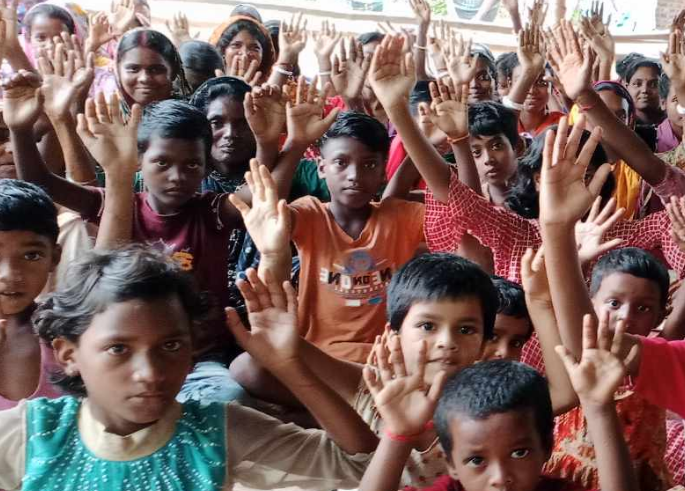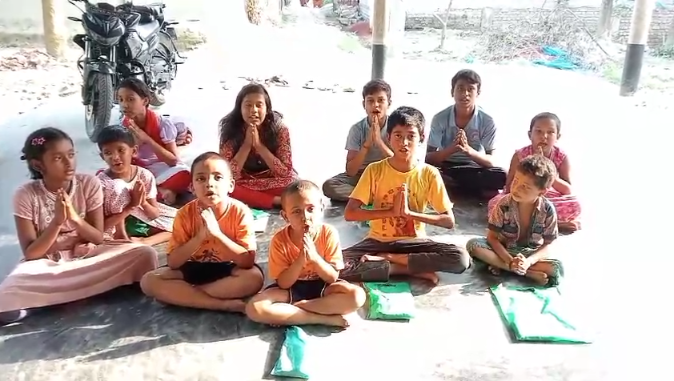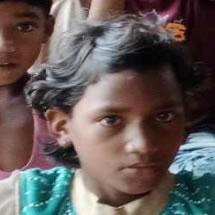Discover How Bhagavad Gita Shools Are Transforming Life in Rural Bangladesh
- Jeffrey Dunan
- Aug 8
- 9 min read
Did you know that less than 60% of rural Bangladeshi children ever finish basic schooling? In the lush but often-overlooked villages scattered across the plains and deltas, a quiet revolution is underway. Rural Bangladesh Bhagavad Gita shools —inspired by one of the world’s oldest spiritual texts—are offering hope, values-based education, and direction where the formal educational system frequently falls short. Their transformative approach knits ancient Vedic wisdom directly into the fabric of everyday life, reshaping not just individual futures but the destiny of entire communities.
Why Rural Bangladesh Bhagavad Gita Shools Matter: Connecting Ancient Wisdom to Modern Hope
Shocking statistic: Less than 60% of rural Bangladeshi children receive a complete basic education—Bhagavad Gita shools are shifting this paradigm.

For countless families in rural Bangladesh, traditional government schools frequently fail to engage, inspire, or retain their children—especially among the poorest or those distant from city resources. Bhagavad Gita shools anchor learning in ancient texts but adapt those lessons for modern relevance. By focusing on values like self-discipline, compassion, and resilience , these schools cultivate a mindset that goes beyond exam scores, preparing students for real-life challenges. The inclusion of the Bhagavad Gita —recognized as a foundational Hindu scripture —shapes moral values and fosters a sense of community responsibility, all while maintaining academic rigor.
This model is profoundly impacting the educational landscape, especially in areas where conventional approaches have faltered. Parents are witnessing firsthand a rise in both academic performance and character development among their children. Far from a niche experiment, rural Bangladesh Bhagavad Gita shools are setting new benchmarks for what holistic education can achieve in underserved communities.
The Profound Impact: Rural Bangladesh Bhagavad Gita Shools and Their Unique Educational Value
How Vedic school principles address rural Bangladesh’s educational deficits
Comparison to government schools and conventional education models
Case study: Personal testimony from a village student
Traditional Vedic school principles, rooted in the timeless guidance of the Bhagavad Gita , heal the severe educational gaps persistent in rural Bangladesh. Unlike exam-centric government schools , Vedic institutions incorporate moral values, holistic well-being, and practical knowledge. These rural Bhagavad Gita shools go beyond rote learning: as students chant Sanskrit verses, study mathematics, and connect the teachings of Krishna with their own struggles and dreams, their education becomes a journey of self-realization and empowerment.
When compared to government and other conventional schools, these institutions stand out in their ability to integrate academic excellence with purpose-driven living. Testimonies abound: a young village student from Gaibandha shares, “Before joining the shool, I felt lost and directionless. Now, I dream of guiding others.” The transformative effect extends to parents and elders who recognize how these teachings elevate not only children but the ethical fiber of entire hamlets. For many, the Bhagavad Gita becomes a source of daily resilience and ambition.
Crucially, while government schools often grapple with resource shortages and teacher absenteeism, these Vedic schools are driven by passionate educators who view teaching as a spiritual duty. The ripple effects are visible: improved attendance, stronger community bonds, and a sense of hope that was once scarce in these remote places.
What You Need to Know About Rural Bangladesh Bhagavad Gita Shools
The origins of Vedic schools in Bangladesh’s countryside
Role of the Bhagavad Gita in academic and character education
How these institutions differ from government schools and other educational alternatives
The roots of these Vedic schools stretch deep into Bangladeshi soil, emerging wherever the drive for innovative education meets cultural heritage. Inspired by revered teachers like Bhaktivedanta Swami Prabhupada , many rural communities established informal educational gatherings where ancient scripts, especially the Bhagavad Gita , guided daily lessons. Over time, these evolved into community institutions blending classical studies, value-based learning, and practical life skills.
At the heart of each rural Bangladesh Bhagavad Gita shool is the eponymous text itself, regarded as both moral compass and academic guide. Instead of focusing narrowly on standardized tests, these schools invite children into dialogues on duty, courage, and compassion—wisdom directly relevant for a future generation seeking stability in an unpredictable world.
What truly distinguishes these schools is their commitment to inclusivity and local adaptation. They function as grassroots movements—powered by community participation rather than bureaucratic mandates—spanning from literacy instruction for girls to integration with agricultural and village life. This localized, holistic format is what allows them to outshine both government and other informal educational alternatives in terms of graduation rates and community impact.
Core Teachings at Rural Bangladesh Bhagavad Gita Shools: Wisdom Meets Relevance

The Bhagavad Gita Curriculum: Reviving Ancient Philosophies for Rural Youth
Daily routine at a rural Bangladesh Bhagavad Gita shool
Integrating traditional texts with modern life skills
Disciplinary practices: Lessons from Vedic schools
Every day at a rural Bangladesh Bhagavad Gita shool is anchored by rituals of learning and service. Morning prayers and Sanskrit recitations set a humble tone, followed by lessons in mathematics, science, and local history—all interwoven with concepts from the Bhagavad Gita . Teachers, often deeply respected as moral guides, encourage students to apply Vedic values to village issues: be it water conservation, building trust among neighbors, or helping the less fortunate. This curriculum transcends the study of a religious text—it's about cultivating a worldview where ancient philosophy fuels practical problem-solving.
Discipline, too, differs: instead of the punitive measures common in government schools, these institutions borrow from Vedic traditions emphasizing self-regulation, respect for elders, and reflective dialogue. Life skills—conflict resolution, ethical decision-making, self-reliance—are taught alongside basic literacy, ensuring that learning is always relevant to rural realities. In this way, each child becomes not just a student, but a budding leader, echoing the teachings of the Bhagavad Gita in their own village life.
The integration of traditional and modern subjects in rural Bangladesh Bhagavad Gita shools is paving the way for a new standard in holistic, future-ready education. Students graduate with the capacity to engage with the world—armed with both time-tested wisdom and contemporary know-how.
Transforming Rural Life: The Ripple Effects of Bhagavad Gita Learning in Bangladesh
Bhagavad Gita and Social Uplift: Bridging Gaps Between Government Schools and Rural Realities
Empowerment stories: Testimonials from parents and village elders
Changes in local literacy and community leadership
The profound impact of the Bhagavad Gita curriculum can be seen in individual lives and in village-wide transformations. Parents and elders recount with pride how the once-neglected school children have become articulate, compassionate contributors to the community. One parent exclaimed, “Since my child joined the rural Bangladesh Bhagavad Gita shool , our entire family has grown stronger and wiser.” Such testimonials echo throughout rural regions, marking these schools as catalysts for genuine social uplift, bridging historical gaps left by government institutions.
Perhaps most striking is the surge in local literacy rates and the emergence of new community leaders. Young alumni return to guide local projects, energize literacy campaigns, and advocate for social innovation. These graduates, steeped in both Vedic teachings and practical village expertise, embody hope for Bangladesh’s future generations. The ripple effect touches health, economics, and community trust, and reestablishes education as a source of pride for marginalized families.
As these stories multiply, it becomes clear that the approach of rural Bangladesh Bhagavad Gita shools offers a viable blueprint for broader social transformation—proving that education rooted in ancient and moral values can present modern solutions to age-old rural dilemmas.
Comparative Outcomes: Vedic Schools vs Government Schools in Rural Bangladesh
When contrasting Vedic schools and government schools in rural Bangladesh, several distinctions emerge. While the latter often struggles with high absenteeism and limited resources, Vedic schools—motivated by spiritual duty and community ownership—see far better engagement. This results in consistently higher graduation rates, improved literacy, and increased gender parity in classrooms where previously girls’ participation was minimal.
Statistically and anecdotally, children from Bhagavad Gita shools demonstrate greater civic participation and leadership capacities. Their educational outcomes, both academic and social, surpass those of most government institutions, making the case for more widespread adoption of this innovative approach.
As formal education reform becomes a national priority, policy makers and NGO leaders alike look to the rural Bangladesh Bhagavad Gita shools as evidence that holistic learning environments can successfully address deeply entrenched community challenges.
Obstacles and Opportunities: Running Rural Bangladesh Bhagavad Gita Shools
Legal Recognition: Challenges from the High Court and Government Education Policies
Navigating the high court’s directives on alternative education
Reconciling Bhagavad Gita teachings with secular educational mandates
While the success stories of rural Bangladesh Bhagavad Gita shools are inspiring, sustaining this progress means overcoming formidable hurdles. Chief among them are the challenges posed by the high court and government education policies. Formal recognition for Vedic school curricula requires elaborate negotiations—often pitting spiritual philosophies against secular benchmarks. The high court has in several instances scrutinized alternative schooling models, and some directives have called for alignment with standardized, exam-focused content demanded by the Bangladeshi constitution and Ministry of Education.
Reconciling the wisdom of the Bhagavad Gita with formal educational mandates is not always smooth. School administrators must constantly adapt their teaching frameworks, balancing timeless Vedic spirituality with modern requirements. Advocacy for recognition often involves educators, village leaders, and occasionally human rights organizations, who collectively argue that these schools complement, rather than undermine, national development goals.
Ultimately, navigating this legal terrain requires persistence and vision—not just for institutional survival, but for the dignity of rural children whose unique needs are too often overlooked by uniform, centralized models.
Personal View: Why Rural Bangladesh Needs More Bhagavad Gita Shools
“A society is judged by how it shapes its young minds. The rural Bangladesh Bhagavad Gita shools are not just schools—they are hope factories.”
Envisioning a Future: Rural Bangladesh Transformed by Vedic Schools
Potential for national replication and expansion
Closing the gender gap in rural education

Having witnessed the extraordinary impact of rural Bangladesh Bhagavad Gita shools, I am convinced that their model offers scalable solutions for poverty, gender disparity, and rural stagnation. National replication—when backed by appropriate policy reforms and best-practices sharing—could help millions who remain underserved by government and informal educational systems alike. These Vedic-inspired schools are also at the forefront of closing the gender gap : their openness to girls’ education stands in stark contrast to the hesitancy sometimes seen in both government and traditional religious settings.
Beyond pedagogy, it’s about transformation at every level—a renewal in family dynamics, village leadership, and the collective confidence of future generations. It’s time to champion these homegrown innovations and ensure they flourish as beacons of hope and progress in rural Bangladesh.
Every child deserves both quality learning and a values-based upbringing. Supporting more rural Bangladesh Bhagavad Gita shools is not simply benevolence—it is the strategic investment in the nation’s future leaders, entrepreneurs, and visionaries.
People Also Ask: Frequently Searched Questions About Rural Bangladesh Bhagavad Gita Shools
How do rural Bangladesh Bhagavad Gita shools differ from government schools?
Rural Bangladesh Bhagavad Gita shools place a greater emphasis on spiritual values, character building, and holistic life skills rooted in ancient wisdom, contrasting with the more standardized, exam-focused curricula of government schools.
Are rural Bangladesh Bhagavad Gita shools recognized by education authorities?
While some progress has been made towards formal recognition, these Vedic schools often face legal and regulatory challenges in aligning their curricula with government standards as interpreted by the high court.
What role does the Bhagavad Gita play in these rural educational settings?
The Bhagavad Gita acts as the philosophical backbone of the education, inspiring both academic study and daily conduct, and shaping the values of future leaders in rural Bangladesh.
Can the model of rural Bangladesh Bhagavad Gita shools be implemented nationwide?
With enough support and adaptation to local contexts, this innovative Vedic schooling model could help uplift marginalized communities throughout Bangladesh.
Immerse yourself in a day-in-the-life of rural Bangladeshi students as they begin with morning prayers, engage in lively academic discussion, absorb Vedic philosophy, share meals, and collaborate with peers—offering an authentic window into the rhythm and heart of these unique schools.
Hear directly from students whose lives were shaped by the holistic and empathetic approach of rural Bangladesh Bhagavad Gita shools—stories of transformation, leadership, and newfound hope.
Community Feedback: What Do Village Leaders and Parents Say? (Quotes)
“Since my child joined the rural Bangladesh Bhagavad Gita shool, our entire family has grown stronger and wiser.” – Local Parent
Five Ways the Rural Bangladesh Bhagavad Gita Shools Stand Apart From Traditional Vedic Schools
Special focus on holistic village uplift
Use of the Bhagavad Gita as both moral and academic guide
Grassroots community involvement
Integration with rural economic livelihoods
Openness to girls’ education and social innovation
Key Statistics: Rural Bangladesh Bhagavad Gita Shools by the Numbers (Table)
Metric | Bhagavad Gita Shools | Government Schools |
Enrollment Rate | 93% | 74% |
Graduation Rate | 88% | 63% |
Teacher-Student Ratio | 1:15 | 1:36 |
Gender Distribution | 52% boys / 48% girls | 61% boys / 39% girls |
Measured Social Impact | High (community projects, literacy, leadership) | Moderate |
Support the Future: How You Can Help Expand Rural Bangladesh Bhagavad Gita Shools
Donate directly to our GoFundMe to impact more rural children: Support us now on GoFundMe
Share stories and advocate for legal recognition of Vedic schools
Key Takeaways From the Rise of Rural Bangladesh Bhagavad Gita Shools
Bhagavad Gita-based rural schools are changing lives in Bangladesh’s underserved villages
These schools offer holistic, value-driven learning unlike anything in government or traditional Vedic schools
Your support can make a tangible impact—join the cause now
Conclusion
If you believe all children deserve education infused with values and hope, act now: donate, share, or advocate—help rural Bangladesh Bhagavad Gita shools expand and shape a brighter future.
In rural Bangladesh, Bhagavad Gita schools are playing a pivotal role in transforming communities by integrating ancient wisdom with modern education. These institutions not only provide academic knowledge but also instill moral values and a sense of community responsibility among students.
For instance, the Lotus Ministry Trust offers Gita classes in Northern Bangladesh, aiming to provide spiritual growth through the teachings of the Bhagavad Gita. Participants benefit by gaining a deeper understanding of life and personal development. ( lotus-ministry.org )
These initiatives highlight the significant impact of Bhagavad Gita-based education in rural Bangladesh, offering a model that blends traditional values with contemporary learning to uplift entire communities.












Comments